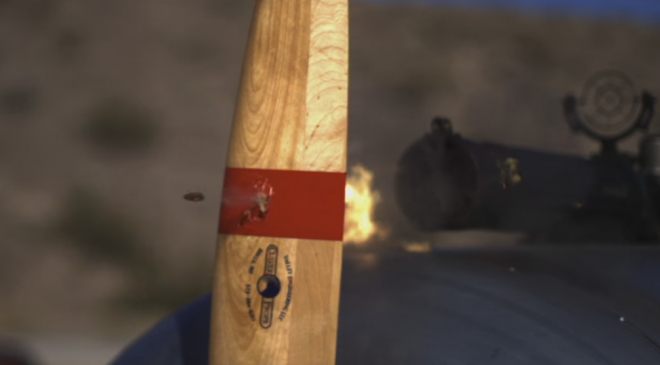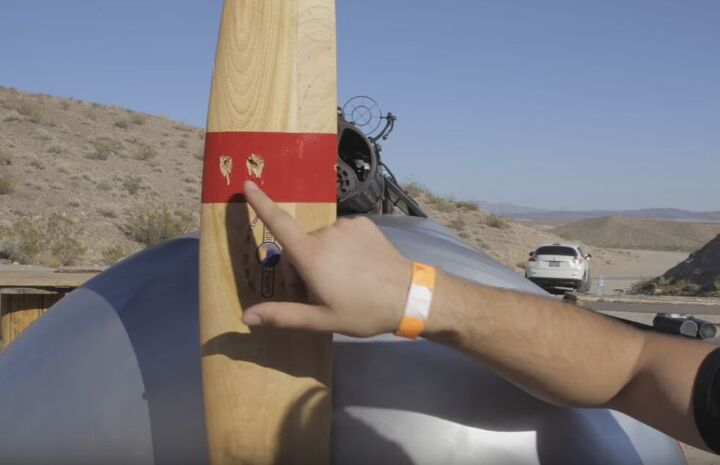In World War I, the Germans developed a secret technology that helped them dominate the skies during 1915 and early 1916. The tech? A device that synchronized the firing of a machine gun with the rotation of an aircraft’s propeller, allowing accurate low-mounted forward-firing weapons on warplanes for the first time.
Synchronization gears, also called “synchronizers” or “interruptor gears”, are fairly simple devices that essentially connect a disconnector mechanism – such as the those used in semiautomatic weapons to prevent continuous fire – to a cam system that activates the disconnector at the right time to prevent a blade strike. The SlowMo Guys took to the Nevada desert to show us a synchronizer in action, under the eye of a high speed camera, of course:
Gav and Dan have created a pretty interesting rig: An M60, with some aesthetic enhancements to make it look more like a period-correct Vickers machine gun, coupled to a propeller via a synchronization gear (I am guessing an electrical unit, based on what appears to be an electric motor on top of the gun – historical WWI-era synchronization devices were purely mechanical). This allows them to show how the ignition of the cartridges in the machine gun is timed correctly, such that the bullets do not impact the propeller blades.
Of course, what happens without a synchronization device? Gav and Dan obliged us there, too, by simply disabling their device. The results, even at a sedate 200 rotations per minute for the propeller, were what you’d expect:
 Your Privacy Choices
Your Privacy Choices

